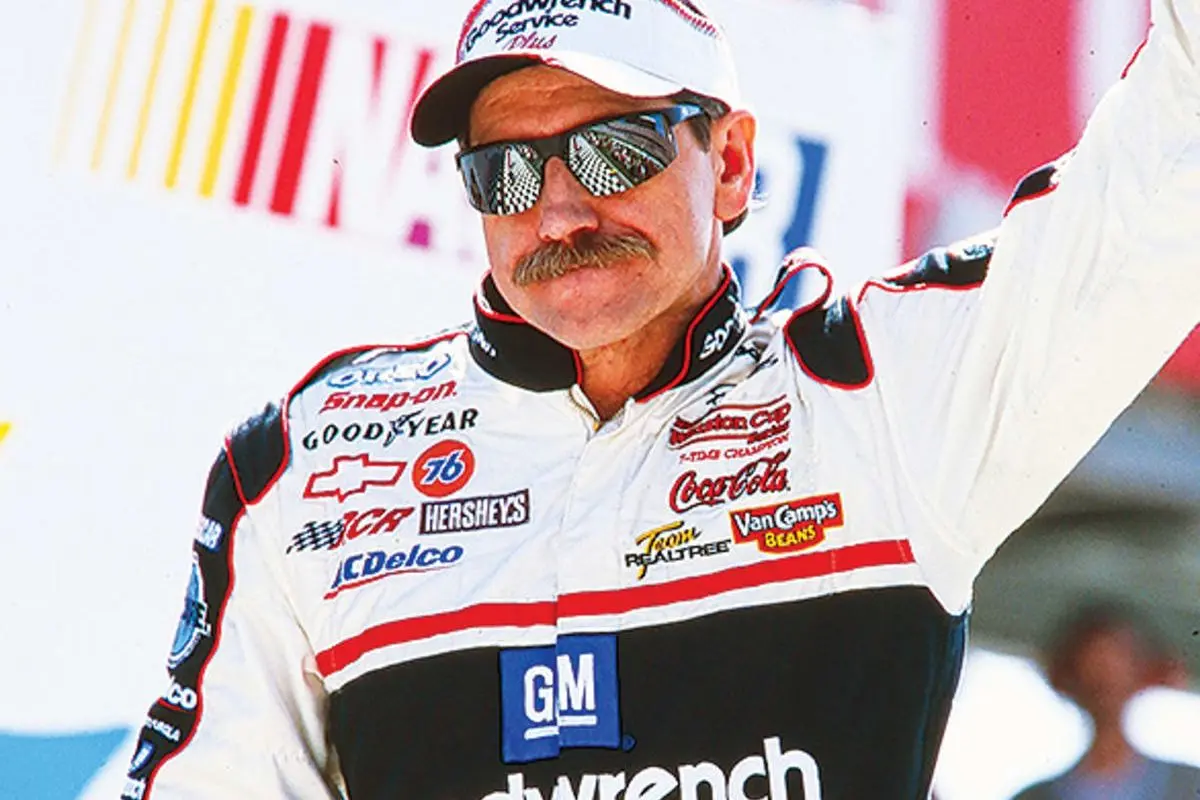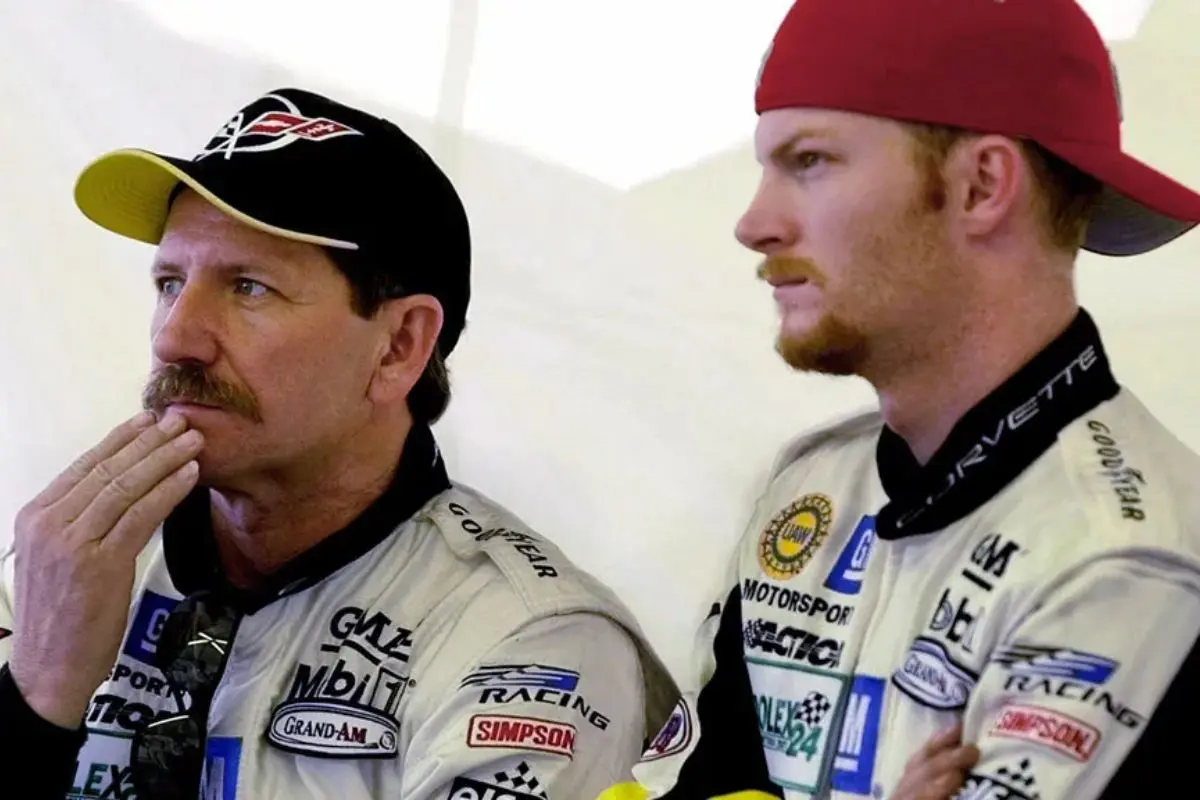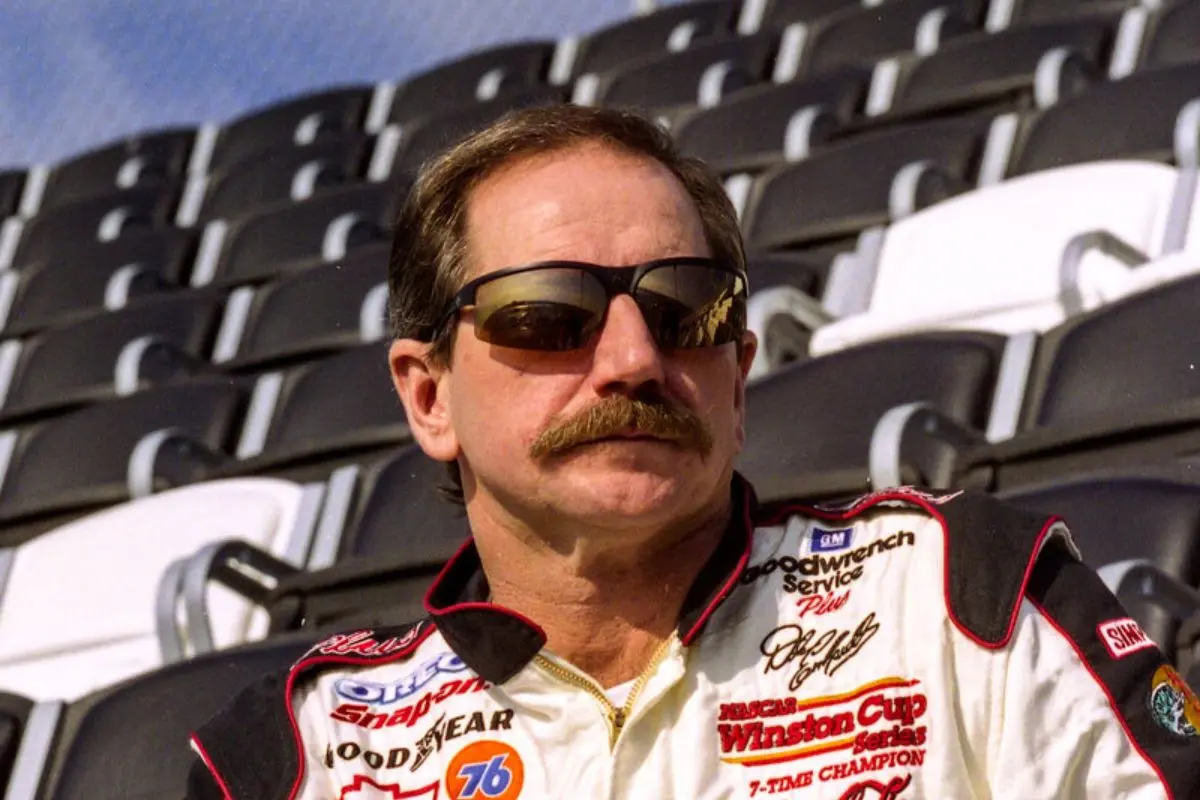Hall of Fame journalist Deb Williams recently unearthed the lesser-known facets of Dale Earnhardt’s life beyond the racetrack, painting a portrait of a man evolving from a fierce competitor to a relatable human being. Her discoveries about Earnhardt’s friendships with media figures like Tom Higgins offer a fresh perspective on his character. This transformation, from an intimidating figure to one more approachable, reshaped his legacy and invites a deeper look into the man behind the legend.
Key Highlights
- Dale Earnhardt transitioned from self-consciousness to becoming an iconic figure in media interactions.
- Earnhardt’s genuine friendship with journalist Tom Higgins humanized his image beyond the racing persona.
- The 1998 Daytona 500 win marked a significant shift in Earnhardt’s career achievements.
- Earnhardt’s relentless passion for racing led him to drop out of school at 16.
- Deb Williams explored Earnhardt’s off-track narratives, capturing his transformation in NASCAR journalism.
Deb Williams’s Legacy in NASCAR Journalism
Deb Williams stands as a pillar in the world of NASCAR journalism, renowned for her keen ability to capture the essence of motorsports and its personalities.
Her tenure as editor of NASCAR Winston Cup Scene for over a decade solidified her as an authoritative voice in the sport.
Williams’s work transcends mere race reports; she explores the intricate narratives and personalities that define NASCAR.
A Squier-Hall Award recipient in 2026, she has been crucial in chronicling the sport’s evolution, offering insights that others might overlook.
Her interviews with legends and her knack for interpreting controversies have set her apart.
Williams’s legacy lies in her unique perspective, bridging the public and private domains of NASCAR, making her work indispensable to the sport’s history.
.@DebWilliams72 remembers watching Dale Earnhardt evolve as a driver and an individual. 3️⃣📈
🎙️ From The @DaleJr Download pic.twitter.com/n6dRfuLfWS
— Dirty Mo Media (@DirtyMoMedia) September 4, 2025
Dale Earnhardt’s Legendary Career
In the domain of NASCAR, few names resonate as deeply as Dale Earnhardt. Known famously as “The Intimidator,” he etched his name into the annals of racing history. His impressive career includes seven NASCAR Cup Series championships, a record he shares with legends Richard Petty and Jimmie Johnson.
“A lot of people don’t realize how much Dale changed from the late 70s and early 80s. He wasn’t the same person.”
“Even dealing with him in the 1990s was entirely different than dealing with him in the early 1980s cause he was very uncomfortable, self-conscious about not having finished high school.” – Deb Williams
Earnhardt’s victory in the 1998 Daytona 500 ultimately completed his storied resume, adding to his 76 career wins. His aggressive style and unmatched competitiveness made him a formidable presence on the track.
| Year | Championships | Wins |
|---|---|---|
| 1980 | 1 | 5 |
| 1986-1987 | 2 | 14 |
| 1990-1991 | 2 | 16 |
| 1993-1994 | 2 | 12 |
| Total | 7 | 76 |
Earnhardt’s evolution off-track, as observed by Deb Williams, reveals the layers beneath his steely exterior.

Dropping Out to Chase Racing Dreams
Although many would consider a formal education essential for future success, Dale Earnhardt defied convention by leaving school at the tender age of 16 to chase his racing dreams.
This bold decision stemmed from a relentless passion, encapsulated in his own words: “I wanted to race; that’s all I ever wanted to do.”
“I didn’t care about work or school or anything, all I wanted to do was to work on race cars and then drive race cars.” – Dale Earnhardt Sr.
Despite creating tension with his father, Ralph Earnhardt, who harbored concerns over Dale’s future without formal schooling, Dale was resolute.
Immersing himself in the world of racing, he honed his skills on local dirt tracks, channeling his energy into building and driving race cars.
This singular focus and resolve charted the course for his legendary NASCAR career, proving that steadfast commitment to one’s passion can redefine conventional pathways to success.

Earnhardt’s Media Relationships
Steering through the intricate landscape of media relationships, Dale Earnhardt found comfort in the genuine friendship he shared with Tom Higgins of the Charlotte Observer. Unlike typical media interactions, Earnhardt’s rapport with Higgins transcended professional boundaries, rooted in shared pastimes such as hunting and fishing.
“He was comfortable with Tom Higgins over at the Charlotte Observer, and they could do hunting and fishing and discuss that.” – DEB WILLIAMS
This connection granted Earnhardt a rare sense of ease, allowing him to reveal facets of his personality often obscured by his racing persona.
This evolution from a reserved young man to an iconic figure demonstrates Earnhardt’s personal growth, adding depth to the mythic “Intimidator” persona.
NASCAR Meets Hollywood: Days of Thunder and Stroker Ace
Few intersections in popular culture are as electrifying as the moment NASCAR met Hollywood, igniting a thrilling era that would forever alter the landscape of racing.
Deb Williams, a Hall of Fame journalist, vividly recounted on the Dale Jr. Download podcast how the 1990 film “Days of Thunder” brought glamour to NASCAR, its impact still resonating. She highlighted the ice cream-eating scene at Darlington Raceway, with NASCAR legends Benny Parsons and Harry Hyde, showcasing authenticity.
“And Days of Thunder, I can pretty much pinpoint to you where all it happened.” – DEB WILLIAMS
Williams also shared insights from interviewing Burt Reynolds during “Stroker Ace” filming, emphasizing his admiration for NASCAR’s culture.
“I was given like 20 minutes with him.” – DEB WILLIAMS
These films didn’t just entertain; they infused NASCAR with allure, drawing new fans and spotlighting the sport’s vibrant spirit, transforming its path in popular culture.
 Dale Earnhardt Jr. Remembers His Father’s First Championship” width=”1200″ height=”800″ srcset=”https://slicksandsticks.com/wp-content/uploads/2024/12/Dale-Earnhardt-Jr.-Remembers-His-Fathers-First-Championship.webp 1200w, https://slicksandsticks.com/wp-content/uploads/2024/12/Dale-Earnhardt-Jr.-Remembers-His-Fathers-First-Championship-300×200.webp 300w, https://slicksandsticks.com/wp-content/uploads/2024/12/Dale-Earnhardt-Jr.-Remembers-His-Fathers-First-Championship-1024×683.webp 1024w, https://slicksandsticks.com/wp-content/uploads/2024/12/Dale-Earnhardt-Jr.-Remembers-His-Fathers-First-Championship-768×512.webp 768w, https://slicksandsticks.com/wp-content/uploads/2024/12/Dale-Earnhardt-Jr.-Remembers-His-Fathers-First-Championship-630×420.webp 630w, https://slicksandsticks.com/wp-content/uploads/2024/12/Dale-Earnhardt-Jr.-Remembers-His-Fathers-First-Championship-150×100.webp 150w, https://slicksandsticks.com/wp-content/uploads/2024/12/Dale-Earnhardt-Jr.-Remembers-His-Fathers-First-Championship-696×464.webp 696w, https://slicksandsticks.com/wp-content/uploads/2024/12/Dale-Earnhardt-Jr.-Remembers-His-Fathers-First-Championship-1068×712.webp 1068w” sizes=”auto, (max-width: 1200px) 100vw, 1200px” />
Dale Earnhardt Jr. Remembers His Father’s First Championship” width=”1200″ height=”800″ srcset=”https://slicksandsticks.com/wp-content/uploads/2024/12/Dale-Earnhardt-Jr.-Remembers-His-Fathers-First-Championship.webp 1200w, https://slicksandsticks.com/wp-content/uploads/2024/12/Dale-Earnhardt-Jr.-Remembers-His-Fathers-First-Championship-300×200.webp 300w, https://slicksandsticks.com/wp-content/uploads/2024/12/Dale-Earnhardt-Jr.-Remembers-His-Fathers-First-Championship-1024×683.webp 1024w, https://slicksandsticks.com/wp-content/uploads/2024/12/Dale-Earnhardt-Jr.-Remembers-His-Fathers-First-Championship-768×512.webp 768w, https://slicksandsticks.com/wp-content/uploads/2024/12/Dale-Earnhardt-Jr.-Remembers-His-Fathers-First-Championship-630×420.webp 630w, https://slicksandsticks.com/wp-content/uploads/2024/12/Dale-Earnhardt-Jr.-Remembers-His-Fathers-First-Championship-150×100.webp 150w, https://slicksandsticks.com/wp-content/uploads/2024/12/Dale-Earnhardt-Jr.-Remembers-His-Fathers-First-Championship-696×464.webp 696w, https://slicksandsticks.com/wp-content/uploads/2024/12/Dale-Earnhardt-Jr.-Remembers-His-Fathers-First-Championship-1068×712.webp 1068w” sizes=”auto, (max-width: 1200px) 100vw, 1200px” />
News in Brief: Hall of Fame Journalist Spills on Dale Earnhardt’s Off-Track Change
In revealing Dale Earnhardt’s off-track evolution, Hall of Fame journalist Deb Williams provides a complex portrait of the legendary NASCAR figure. Earnhardt’s shift from an intimidating competitor to a relatable icon is highlighted by his genuine media friendships, exemplified by his bond with Tom Higgins. This transformation allowed fans to connect with the man behind the wheel, enriching his legacy. Williams’s insights clarify how Earnhardt’s personal growth mirrored his professional successes, cementing his place as a multifaceted figure in NASCAR history.
ALSO READ: What NASCAR Drivers Saw in Dale Earnhardt Sr.’s Final Race After Fateful Crash
